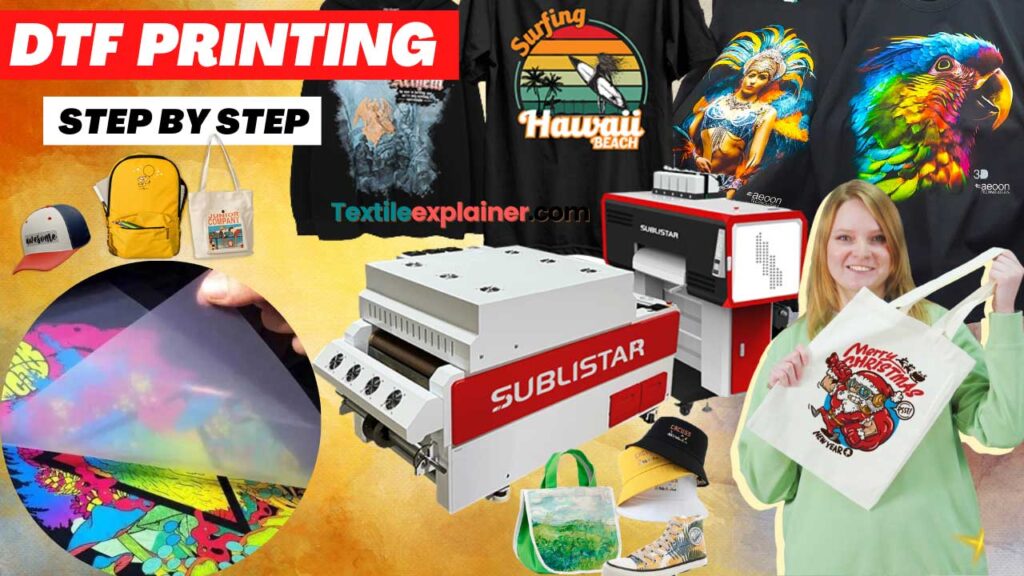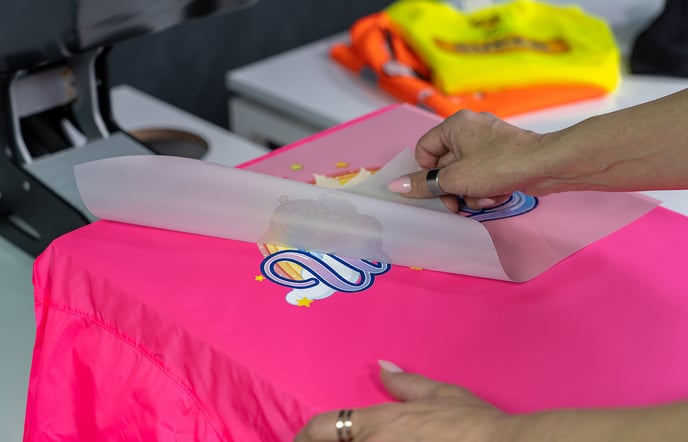DTF Printing Transformation: Releasing Imagination in Fabric Style and Production
Understanding DTF Printing: Tips and Tricks for Getting Vibrant and Sturdy Prints
On the planet of textile printing, achieving long lasting and vibrant prints is a coveted skill that can raise the quality of your result. Understanding DTF (Direct to Film) printing requires a blend of technological expertise, precision, and focus to detail. From choosing the right products to adjust print setups and developing post-printing ending up strategies, there are countless elements that can influence the result of your prints. Comprehending just how to navigate these complexities can make all the distinction between a sub-par outcome and a truly phenomenal one.

DTF Printing Essentials
For those brand-new to the globe of fabric printing, comprehending the fundamentals of DTF printing is important to understanding this cutting-edge method. Direct to Film (DTF) printing is a modern-day technique that includes transferring layouts from a special movie onto numerous fabrics using a heat press. Unlike traditional approaches like display printing, DTF uses advantages such as vivid shades, elaborate detailing, and the capacity to publish on varied materials like cotton, polyester, and blends.
The procedure begins by publishing the style on a special DTF movie using a suitable printer with CMYK or CMYKW ink collections. Once the layout is printed, it is after that treated with a heat press to develop a resilient and lasting print. DTF printing is known for its capacity to recreate intricate styles with high accuracy and color precision, making it a prominent selection for services looking to produce custom clothing, advertising products, and extra.
Selecting the Right Products

The adhesive powder acts as a bonding representative in between the printed design and the textile, so it needs to have strong bond residential or commercial properties to ensure a resilient and durable transfer. By meticulously picking the appropriate products for DTF printing, printers can enhance the quality, vibrancy, and long life of their prints.
Optimizing Publish Settings
When aiming to accomplish the very best results in DTF printing, careful attention to enhancing print setups is essential for guaranteeing premium and exact transfers onto fabrics. One essential facet to think about when maximizing print setups is the resolution. Higher resolutions typically cause sharper and extra thorough prints, improving the total quality of the transfer. Furthermore, adjusting the ink density can assist achieve vibrant colors and make sure that the design stands apart on the material.
An additional essential setup to maximize is the print speed. Discovering the right balance in between speed and high quality is crucial. While increasing the speed can improve effectiveness, it may compromise the last print's quality and color saturation. Trying out different speeds and observing the results can help determine the optimal setup for each print task - DTF Printing.
Furthermore, make improvements shade profiles and making certain appropriate shade management are essential for accomplishing regular and accurate shades across different prints. By calibrating shade setups and profiles, printers can minimize color discrepancies and create uniform results, improving the general print top quality and client fulfillment.
Preparing Artwork for DTF Printing
To make certain optimum results in DTF printing, careful interest to detail is necessary when preparing art work for transfer onto fabrics. Begin by choosing high-resolution photos to keep clearness and sharpness in the last print. Vector graphics are liked as they can be easily scaled without losing top quality. Convert the art work to CMYK color setting to guarantee that the colors translate properly from screen to print. Adjust the color degrees and comparison as needed to enhance the vibrancy of the layout. When adding message to the art work, pick fonts that are suitable and readable for the intended dimension. Remember to mirror the final style prior to publishing to ensure that it transfers correctly onto the garment. In addition, consider the textile type and color when selecting the art work, as these factors can impact the final appearance. By following these steps and paying very close attention to the details, you can prepare art work that is enhanced for vibrant and sturdy DTF prints.
Post-Printing Finishing Methods
Implementing efficient post-printing finishing strategies is essential to improving the sturdiness Full Report and aesthetic appeal of DTF prints on fabrics. When the printing procedure is total, using heat to the printed style is necessary.
After warm pushing, peeling the PET movie meticulously is an essential step. This process must be done this link gradually and progressively to prevent any kind of damage to the print. When the film is eliminated, the print might call for extra treating time to further establish the ink into the material. This action aids improve the washability and durability of the print, ensuring it can endure several laundry cycles without fading or breaking.
Additionally, trimming any excess film around the design can provide the last print a tidy and professional appearance. Putting in the time to effectively finish DTF prints post-printing can substantially impact the overall top quality and durability of the textile style.

Verdict
Finally, mastering DTF printing calls for a thorough understanding of the fundamentals, choosing appropriate materials, maximizing print setups, preparing art work properly, and using post-printing completing methods. By following these ideas and methods, one can attain long lasting and dynamic prints that fulfill their desired high quality standards. Regular practice and interest to information are important in achieving successful end results in DTF printing.
From selecting the ideal products to adjust print settings and improving post-printing finishing techniques, there are many factors that can influence the result of your click here now prints. Unlike conventional approaches like display printing, DTF offers advantages such as dynamic colors, complex detailing, and the capacity to print on varied products like cotton, polyester, and blends.
Once the style is published, it is after that healed with a warmth press to create a durable and long lasting print.When intending to attain the ideal outcomes in DTF printing, meticulous focus to enhancing print setups is vital for ensuring high-grade and accurate transfers onto textiles.In verdict, mastering DTF printing calls for a thorough understanding of the basics, selecting suitable products, maximizing print setups, preparing art work properly, and using post-printing finishing strategies.